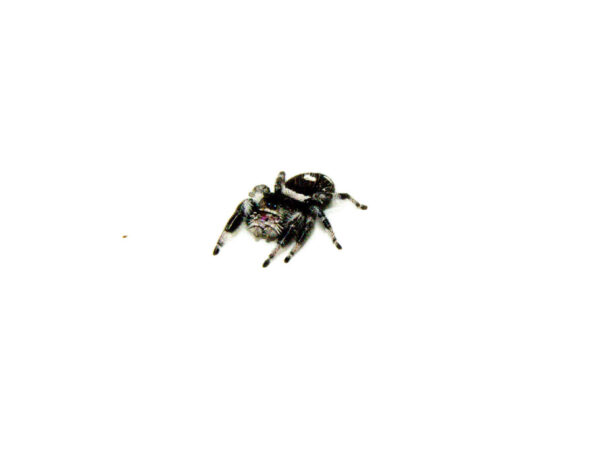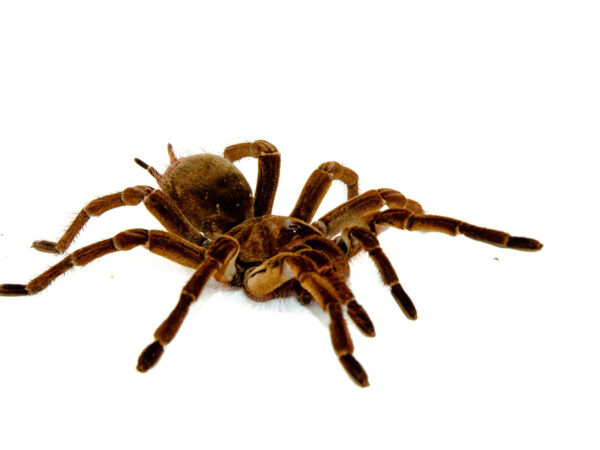- “cobalt blue tarantula (haplopelma lividum)” already exists in your wishlist
Cobalt Blue Tarantula (Haplopelma lividum): A Stunning Burrowing Beauty
The Cobalt Blue Tarantula (Haplopelma lividum) is one of the most striking and sought-after tarantulas in the pet trade, known for its mesmerizing electric-blue legs and shy, reclusive behavior. Native to the tropical forests of Southeast Asia, this burrowing species offers a dramatic visual appeal that captivates hobbyists and arachnid enthusiasts alike.
Appearance and Identification Cobalt Blue Tarantula (Haplopelma lividum)
The most defining feature of the Cobalt Blue Tarantula is, unsurprisingly, its vivid blue coloration. While its carapace and abdomen are typically a deep, velvety black or dark brown, its legs shimmer with metallic blue under the right lighting—making it one of the most photogenic tarantulas in the world.
Key Characteristics:
-
Adult size: 4.5 to 6 inches leg span
-
Color: Glossy cobalt-blue legs with a darker body
-
Lifespan: Females up to 15 years; males 4–5 years
Though often hidden due to their fossorial nature, even a glimpse of their blue legs emerging from a burrow is enough to impress.
Natural Habitat Cobalt Blue Tarantula (Haplopelma lividum)
The Cobalt Blue Tarantula (Haplopelma lividum) originates from the rainforests of Thailand, Myanmar, and surrounding regions. It prefers humid, densely vegetated environments where it can dig elaborate tunnels to retreat into. In captivity, replicating this environment is crucial to the spider’s well-being.
Behavior and Temperament
This species is not for the faint of heart. The Cobalt Blue Tarantula is known for its defensive nature. It is extremely fast, easily startled, and prefers to stay hidden in its burrow rather than interact with humans. It will often retreat when disturbed, but it can strike if provoked.
Behavior Traits:
-
Not recommended for handling
-
Extremely fast and skittish
-
Defensive and may display threat posture
-
Spends most of its time in burrows
Because of this temperament, the cobalt blue is more suitable for experienced keepers who enjoy observing rather than interacting.
Enclosure Setup
Proper housing is key to keeping the Cobalt Blue Tarantula healthy and stress-free. As a deep burrower, it requires a vertically spacious terrarium with ample substrate to dig into.
Enclosure Requirements:
-
Minimum size: 12” x 12” x 12”
-
Substrate depth: 6–8 inches of moist coco fiber or peat moss
-
Humidity: 75–85%
-
Temperature: 75–80°F
-
Include: Cork bark for a starter burrow, water dish, foliage for cover
Avoid unnecessary décor that could block digging space. Always keep the enclosure securely locked—this tarantula is fast and escape-prone.
Feeding and Diet
The Cobalt Blue Tarantula (Haplopelma lividum) is a strong and active hunter. It prefers live prey and has a healthy appetite, especially when it’s out and about.
Diet Guidelines:
-
Feed juveniles 2–3 times a week (small crickets or roaches)
-
Feed adults once a week (large crickets, dubia roaches, or locusts)
-
Remove uneaten prey after 24 hours
This species will often ambush food from inside its burrow, providing an exciting display when it strikes.
Molting and Growth
Like all tarantulas, the Cobalt Blue Tarantula molts to grow. Before molting, it may refuse food and seal off its burrow. Do not disturb it during this time, as this process is delicate and critical to its survival.
Signs of Pre-Molt:
-
Refuses food
-
Seals itself in the burrow
-
Dull coloration
After molting, allow at least 7 days before feeding again.
Is the Cobalt Blue Right for You?
While stunning in appearance, the Cobalt Blue Tarantula is best suited for display-only collections. It’s not a pet for handling or interaction, and its speed and defensiveness require caution and experience.
Pros:
-
Visually stunning with electric blue legs
-
Fascinating burrowing behaviors
-
Low-maintenance with proper setup
Cons:
-
Not beginner-friendly
-
Highly defensive and fast
-
Spends most of its time hidden
Final Thoughts
The Cobalt Blue Tarantula (Haplopelma lividum) is a captivating species that offers both beauty and mystery. Though not ideal for handling or interaction, it’s a perfect showcase tarantula for seasoned keepers who respect its space and needs. If you’re ready for a tarantula that dazzles with color and keeps you on your toes, this might be the perfect addition to your collection.











Reviews
There are no reviews yet.